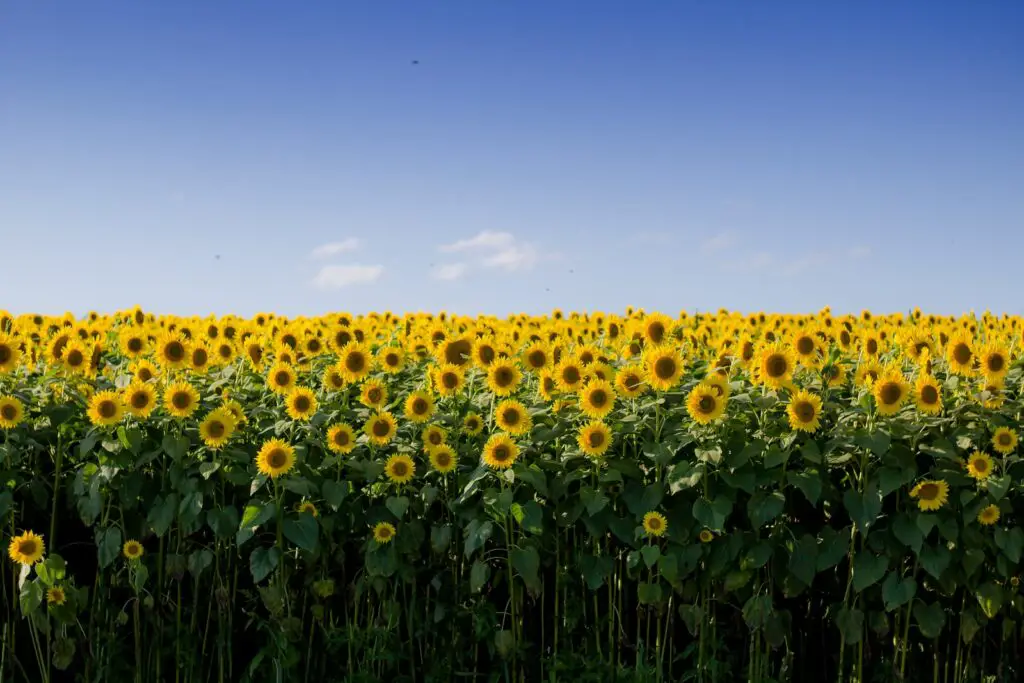
Sunflowers are a popular flower known for their bright yellow petals and large, round centers. However, many people may wonder what sunflowers smell like, as the appearance of the flower doesn’t necessarily give any indication of its scent.
Sunflowers actually do have a scent, although it may not be as strong as other flowers. The scent of a sunflower can vary depending on the species and the individual flower, but it is generally described as being sweet and slightly nutty. Some people may also detect a hint of honey or vanilla in the scent of a sunflower.
While the scent of a sunflower may not be as prominent as that of other flowers, it can still be enjoyed by those who appreciate its unique fragrance. In addition, sunflowers are often used in aromatherapy to promote relaxation and reduce stress. Understanding what sunflowers smell like can help individuals fully appreciate these beautiful flowers and their potential benefits.
Table of Contents
The Scent of Sunflowers
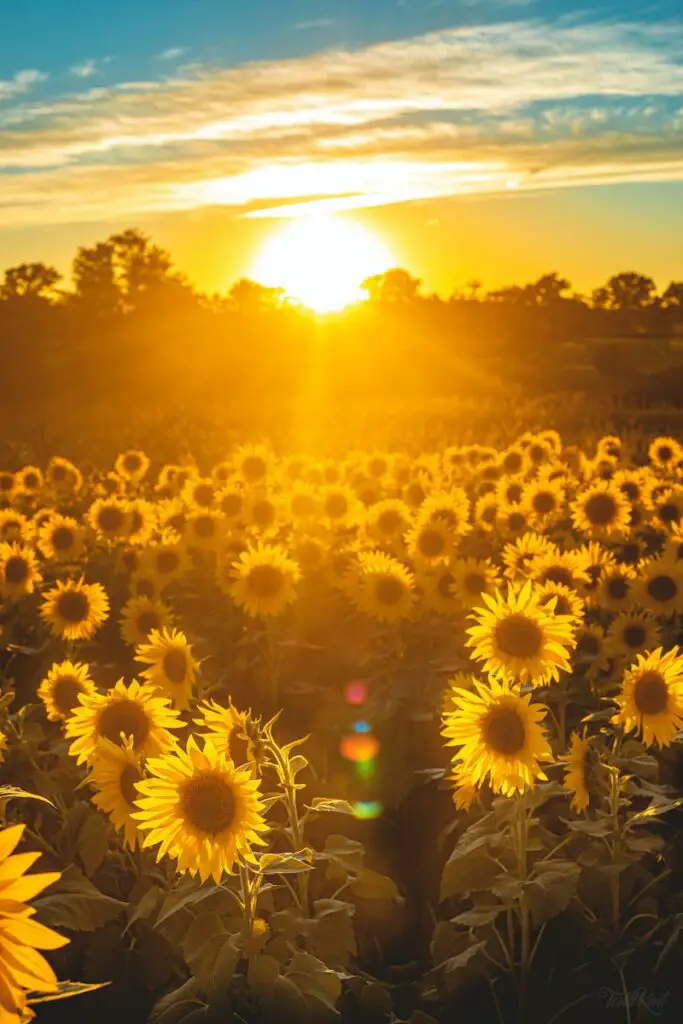
Sunflowers are known for their bright and vibrant appearance, but they also have a unique scent that is often overlooked. The scent of sunflowers is subtle, yet distinctive, and can be described as earthy, vegetal, and floral.
The fragrance of sunflowers is not overpowering like some other flowers and is often described as a sweet, resinous scent with a hint of citrusy lemon. This subtle smell is due to the presence of a chemical compound called sesquiterpene lactone, which is found in the petals and leaves of the sunflower.
The floral scent of sunflowers is not as prominent as other flowers like roses or jasmine, but it is still present. The floral notes are more subtle and are often mixed with the earthy and vegetal scents, creating a unique fragrance that is hard to describe.
The fragrance of sunflowers can vary depending on the variety and growing conditions. Some sunflowers may have a stronger floral scent, while others may have a more earthy or resinous smell. Additionally, the scent of sunflowers may be more pronounced in the morning when the flowers are fresh and newly opened.
In conclusion, the scent of sunflowers is a unique and subtle fragrance that is often overlooked. It is a combination of earthy, vegetal, and floral scents with a hint of citrusy lemon. While it may not be as prominent as other floral fragrances, it is still a distinctive scent that adds to the overall beauty of sunflowers.
Factors Influencing Sunflower Scent

Time of Day
The time of day can have a significant impact on the scent of sunflowers. Sunflowers are known to have the strongest scent in the morning, when the temperature is cooler and the humidity is higher. As the day progresses and the temperature rises, the scent of the sunflowers becomes less intense.
Growing Conditions
Growing conditions such as soil quality, water, pH, humidity, and temperature can also affect the scent of sunflowers. Sunflowers grown in nutrient-rich soil and with adequate water tend to have a stronger scent than those grown in poor soil or with insufficient water. High humidity and cooler temperatures can also enhance the scent of sunflowers.
Genetic Variations
Different varieties of sunflowers can have varying scents. Helianthus annuus is the most common variety of sunflower and is known for its sweet, earthy fragrance. However, other varieties may have a different scent or no scent at all. Genetic variations can also play a role in the scent of sunflowers, as certain genes may be responsible for producing specific compounds that contribute to the fragrance.
Environmental Pollutants
Environmental pollutants such as limonene and other volatile organic compounds can affect the scent of sunflowers. These pollutants can be released by nearby factories, traffic, or other sources of pollution. Sunflowers grown in areas with high levels of pollution may have a weaker scent or a different scent than those grown in cleaner environments.
Overall, the scent of sunflowers can be influenced by a variety of factors including time of day, growing conditions, genetic variations, and environmental pollutants. Understanding these factors can help growers optimize the scent of their sunflowers and provide a more enjoyable experience for those who appreciate the fragrance of these beautiful flowers.
Sunflowers and Pollinators
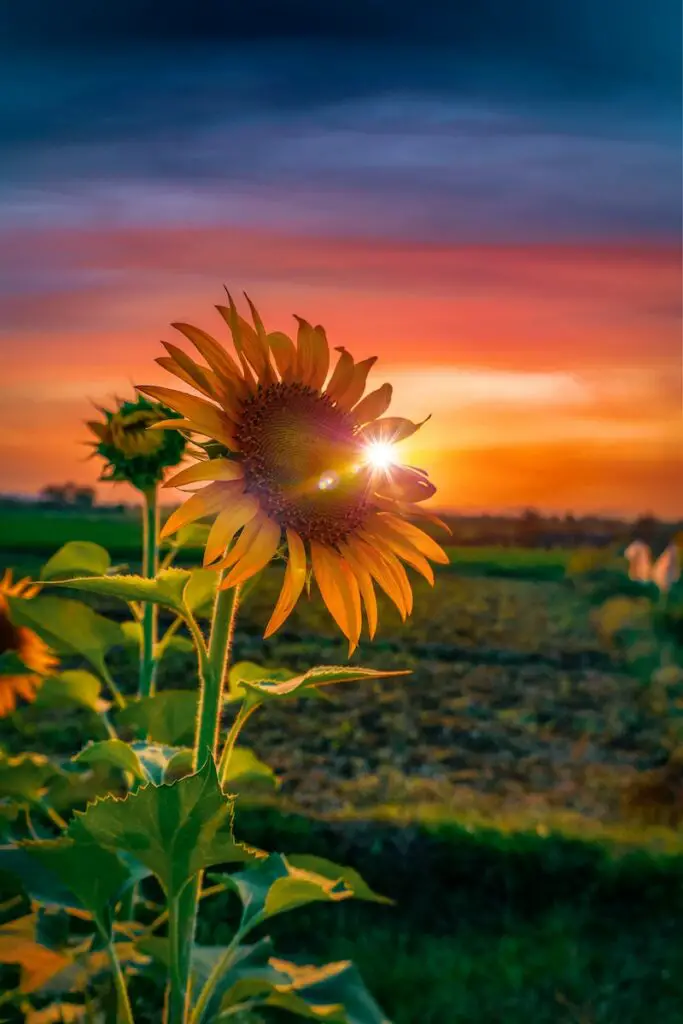
Sunflowers are well-known for their bright yellow petals and their ability to turn towards the sun. However, these beautiful flowers also play an important role in the ecosystem by attracting pollinators such as bees, butterflies, and other insects.
Sunflowers produce large amounts of pollen, which is essential for the reproduction of these plants. Pollen is the male reproductive cells of flowers and is carried by pollinators to female flowers, where it fertilizes the ovules and produces seeds.
Bees and other insects are attracted to sunflowers by their bright colors and sweet nectar. Sunflowers produce a lot of nectar, which is a sugary liquid that provides energy for pollinators. As bees and other insects feed on the nectar, they inadvertently pick up pollen on their bodies, which they then transfer to other flowers.
Butterflies are also attracted to sunflowers, although they do not play as significant a role in their pollination as bees and other insects. Butterflies are primarily attracted to the bright colors of sunflowers and the nectar they produce.
In conclusion, sunflowers are an important source of pollen and nectar for bees, butterflies, and other insects. By attracting these pollinators, sunflowers play a crucial role in the reproduction of many plant species and help to maintain the biodiversity of our ecosystems.
Sunflower Varieties and Their Unique Smells

Sunflowers are known for their bright yellow petals and large, round centers. But did you know that different varieties of sunflowers can have unique smells? In this section, we’ll explore the scents of three popular sunflower varieties: the common sunflower, giant sungold, and teddy bear.
Common Sunflower
The common sunflower, also known as Helianthus annuus, is the most well-known variety of sunflower. It’s often used for its oil and seeds, but it also has a distinct smell. The scent of the common sunflower is described as earthy and nutty, with a subtle sweetness. Some people also detect a hint of vanilla in the aroma.
Giant Sungold
The giant sungold sunflower, or Helianthus annuus ‘Giant Sungold’, is a hybrid variety that can grow up to 14 feet tall. Its petals are a deep golden color, and its center is a dark brown. The scent of the giant sungold sunflower is similar to that of the common sunflower, with a nutty and earthy aroma. However, some people also detect a slight citrusy note in the scent.
Teddy Bear
The teddy bear sunflower, or Helianthus annuus ‘Teddy Bear’, is a dwarf variety that grows to be about 2-3 feet tall. Its petals are a soft yellow color, and its center is dark brown. The scent of the teddy bear sunflower is often described as sweet and fruity, with a hint of honey. Some people also detect a slight floral note in the aroma.
In conclusion, sunflowers are not only visually stunning, but they also have unique scents that vary by variety. From the earthy and nutty aroma of the common sunflower to the sweet and fruity scent of the teddy bear sunflower, each variety has its own distinct smell.
The Role of Sunflower Scent in Aromatherapy and Perfumes
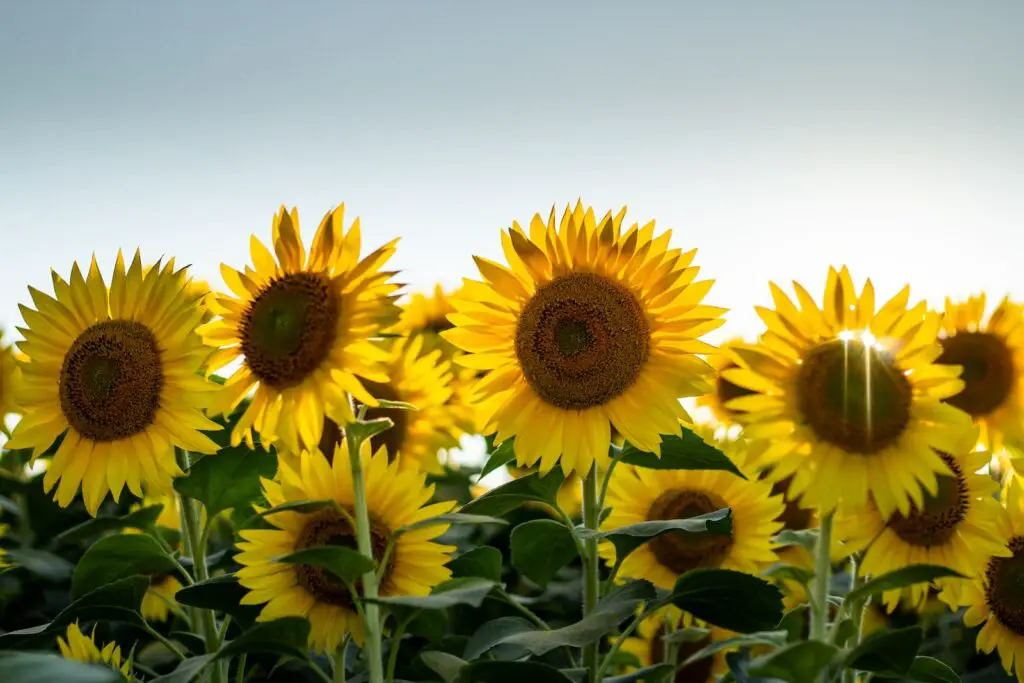
Sunflowers have a unique scent that is often described as earthy with a hint of nuttiness. This scent has been used in various applications, including aromatherapy and perfumes. In this section, we will explore the role of sunflower scent in these areas.
Aromatherapy
Aromatherapy is the use of essential oils to promote relaxation, reduce stress, and improve mood. Sunflower oil is often used as a carrier oil in aromatherapy blends due to its light texture and mild scent. However, the scent of sunflowers themselves can also be used in aromatherapy.
The earthy and nutty scent of sunflowers is believed to promote relaxation and reduce stress. It is often used in aromatherapy blends designed to calm the mind and body. Some practitioners also believe that sunflower scent can help improve mood and promote happiness.
Perfumes
Sunflower scent is also used in perfumes. Elizabeth Arden’s Sunflowers perfume is one of the most popular sunflower-based fragrances on the market. The perfume features a blend of fruity and floral scents, with sunflowers as the main note.
Sunflower scent is often used in perfumes due to its unique earthy and nutty aroma. It can add depth and complexity to a fragrance, making it more interesting and appealing. Some perfumes also use sunflower oil as a carrier oil to help the fragrance last longer on the skin.
Candles
Sunflower scent is also used in candles. The earthy and nutty scent of sunflowers can create a warm and inviting atmosphere in any room. It is often used in candles designed to promote relaxation and reduce stress.
Some candle makers also use sunflower oil as a natural alternative to traditional candle wax. Sunflower oil candles burn cleaner and longer than traditional candles, making them a popular choice among eco-conscious consumers.
Essential Oils
Sunflower oil is also used as a carrier oil in essential oil blends. The light texture and mild scent of sunflower oil make it a popular choice for diluting essential oils. It can help the essential oils absorb into the skin more easily and reduce the risk of skin irritation.
In conclusion, sunflower scent plays an important role in aromatherapy, perfumes, candles, and essential oils. Its unique earthy and nutty aroma can promote relaxation, reduce stress, and improve mood. Sunflower scent is a versatile ingredient that can be used in a variety of applications to create a warm and inviting atmosphere.
Sunflower Seeds and Oil
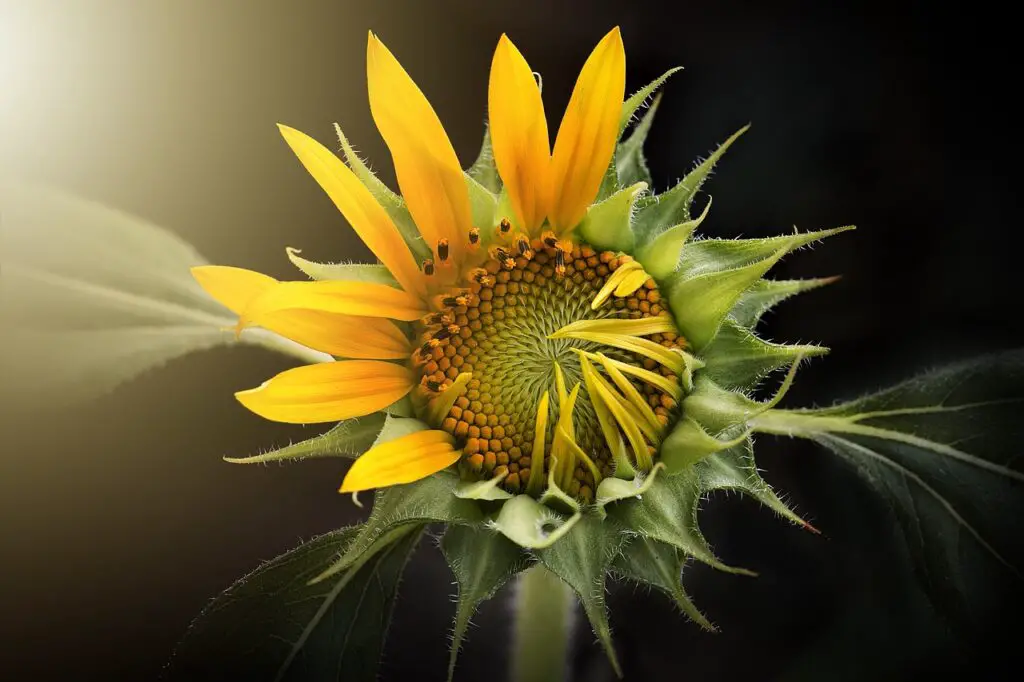
Sunflower seeds are a popular snack and ingredient in many cuisines. They have a mild, nutty flavor and a crunchy texture. Sunflower seeds are often roasted and salted, but they can also be eaten raw or added to baked goods, salads, and other dishes.
Sunflower oil is a common cooking oil that is extracted from sunflower seeds. It has a mild flavor and a high smoke point, which makes it suitable for frying, baking, and sautéing. Sunflower oil is also used in salad dressings, marinades, and other recipes.
Sunflower seeds and oil are rich in nutrients, including vitamin E, magnesium, and selenium. They are also a good source of healthy fats, such as monounsaturated and polyunsaturated fats.
Sunflower seeds can be a healthy snack option when consumed in moderation. However, some commercial brands of sunflower seeds may be high in sodium and added sugars, so it’s important to read the nutrition label before purchasing.
Similarly, while sunflower oil can be a healthy cooking oil, it is important to choose a high-quality, cold-pressed oil to ensure that it retains its nutrients and does not contain harmful additives.
Overall, sunflower seeds and oil can be a nutritious and delicious addition to a healthy diet when consumed in moderation and in the right form.
Sunflowers in Different Cultures
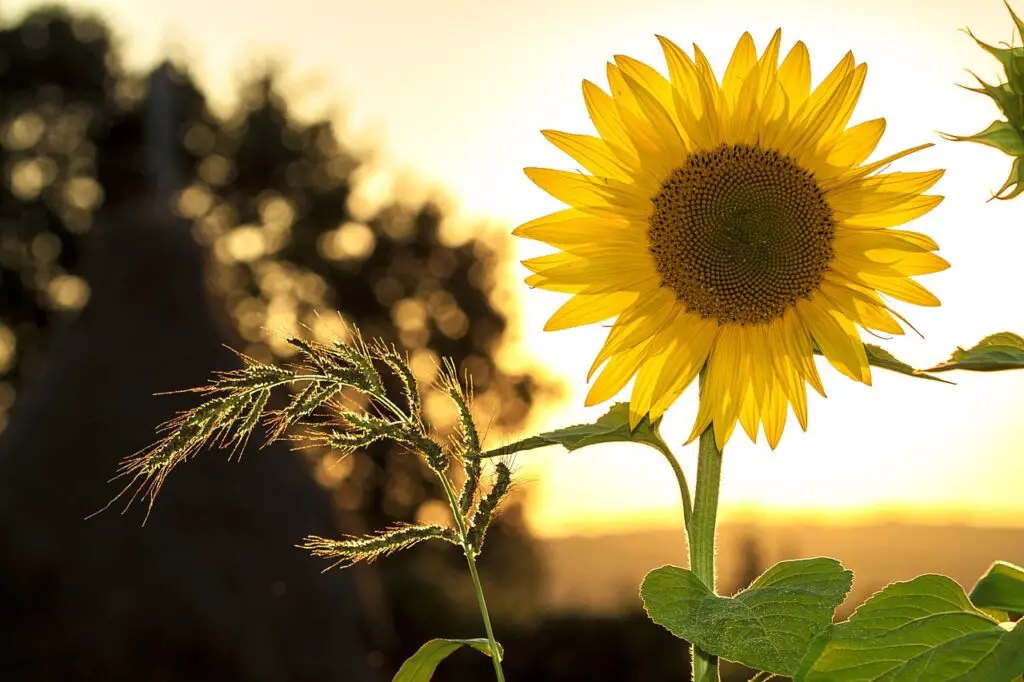
Sunflowers have been an important part of many cultures around the world. Here are some examples of how sunflowers have been used and perceived in different cultures:
North America
In North America, sunflowers are commonly associated with the fall season and are often used as decorative items during Thanksgiving. They are also used as bird feed and oilseed crops. The oil extracted from sunflowers is used in cooking and as a source of biodiesel.
Food
Sunflower seeds are a popular snack food and are often roasted and salted. They are also used in baking and cooking, especially in Eastern European cuisine.
National Flower
In Ukraine, the sunflower is the national flower and is deeply ingrained in the country’s culture. It is a symbol of happiness, warmth, and prosperity. Sunflowers are often used in Ukrainian folk art and embroidery.
Other Cultures
In Chinese culture, sunflowers symbolize long life, good luck, and happiness. In Native American culture, sunflowers are a symbol of harvest and fertility. In some African cultures, sunflowers are used in traditional medicine to treat various ailments.
Overall, sunflowers have played an important role in many cultures around the world. Their bright and cheerful appearance, as well as their practical uses, have made them a beloved and versatile plant.
Sunflower Pests and Diseases
Sunflowers are generally hardy plants that are not prone to many pests and diseases. However, like all plants, they are still vulnerable to certain issues that can affect their growth and health.
Pests
Some common pests that can affect sunflowers include:
- Aphids: These small insects can suck the sap out of sunflower plants, causing them to wilt and die.
- Cutworms: These caterpillars can cut through the stems of young sunflower plants, killing them.
- Sunflower moth: This pest lays its eggs on the flower buds of sunflowers, causing damage to the developing seeds.
To prevent pest infestations, it is important to keep the area around sunflowers clean and free of debris. Additionally, using insecticidal soaps or neem oil can help control pest populations if they do occur.
Diseases
Some common diseases that can affect sunflowers include:
- Powdery mildew: This fungal disease can cause a white, powdery coating to form on the leaves and stems of sunflowers, inhibiting their growth.
- Rust: This fungal disease can cause orange or brown spots to form on the leaves and stems of sunflowers, eventually causing them to wither and die.
- Frost damage: Sunflowers are annual plants that are sensitive to frost. If they are exposed to freezing temperatures, it can cause damage to their leaves and stems.
To prevent diseases from affecting sunflowers, it is important to keep the plants well-watered and to avoid overcrowding them. Additionally, using fungicides or copper sprays can help control fungal diseases if they do occur.
Sunflowers in the Family Asteraceae
Sunflowers belong to the family Asteraceae, which is the largest family of flowering plants. This family includes over 32,000 species, including daisies, asters, and chrysanthemums. Sunflowers are known for their large, showy flower heads, which are made up of many small flowers arranged in a spiral pattern.
The scientific name for sunflowers is Helianthus annuus, which comes from the Greek words helios (sun) and anthos (flower). Sunflowers are native to North America, but they are now grown all over the world for their oil-rich seeds and their ornamental value.
Sunflowers are annual plants, which means that they complete their life cycle in one growing season. They grow best in full sun and well-drained soil, and they can reach heights of up to 10 feet or more. Sunflowers have a strong, sturdy stem that supports their large flower heads, which can be up to 12 inches in diameter.
The flower heads of sunflowers are composed of two types of flowers: ray flowers and disk flowers. The ray flowers are the large, showy petals that surround the disk flowers in the center of the flower head. The disk flowers are the small, tubular flowers that make up the center of the flower head. Sunflowers come in many different colors, including yellow, orange, red, and brown.
Overall, sunflowers are a fascinating and beautiful plant that are beloved by many. Their unique structure and bright colors make them a popular choice for gardens, and their oil-rich seeds are a valuable crop for many farmers around the world.